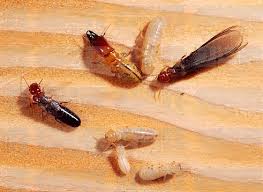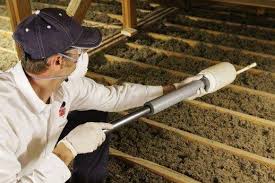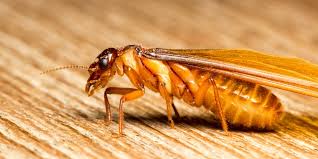A Biased View of Termite Control Use
After a termite inspection has been completed, pest control specialists can suggest a best plan of action to remove present termites and prevent future infestation. Usually, some kind of chemical treatment will probably be advocated. Termites treatments include temporary chemical applications, baits, traps as well as physical and structural obstacles.
In many cases, this will be all it takes to eliminate an whole colony of termites. You might be in risk of infestation, if you start with baiting. Termites may have a network of tunnels they travel through to achieve a fundamental nest around 100 metres in their food resources.
Finally the extent of also the control technique and your problem required to solve it will impact the purchase price you pay.
Indicators on Termite Control Using Borax You Should Know
Termite treatment with dust a spray or foam can cost between $3 30 and $6 60 based on the degree of the damage.
Soil therapy is the way to keep termites from your home. This can cost between $2 500 and $3 500, but will not need to be repeated.
Expect to pay in the area of 2 50 for a pre-purchase pest inspection, and $300-$600 for a joint building and pest inspection.
Little Known Facts About Termite Control Using Borax.
Be sure to check what they include as part of the services before you hire a local pest control specialist.
Be as comprehensive as you can in describing the type or kinds of pests you've got and the level of the issue. Mention these if there are accessibility difficulties. This way you'll receive more accurate original quotes. If youre hiring a pest control agency guarantee their treatment program is compliant with Australian Standard AS 36 60.
Most services will offer a money-back guarantee. Also check that your pest management service is licensed and qualified to work in your home. .

Termite Control Using Borax - Truths
Termites consume cellulose and wood in natural bush land and serve an ecologicalfunction by converting dead trees to organic matter. Regrettably in the urban environment, thewood in buildings and other constructions like bridges and wooden power poles is equallyappealing to termites and infestation may cause harm.

Direction of termites, and eradication of exotic species isalso expensive a campaign to eliminate West Indian dry wood termite Cryptotermes brevis (Walker)in Queensland is like it estimated to have cost $4.2 million by 199 8 (Peters and Fitzgerald, 199 8).Worldwide, harm brought on by termites is estimated at U.S $2 billion per annum in terms of Urban cities & termite attack Environment 2 3Â damage to wooden structures (Fage et al., 198 8). .
Treatment and prevention of termite damage in Australian cities is therefore needed, and might give rise to undesirable side effects. Until 199 5, organochlorine termiticide treatments were utilized to create barriers. These have since been replaced with physicalbarriers and other persistent, compounds. As a consequence, chemical termiticides will need to be reapplied on a regular basis, averagingevery 3 to 5 years depending on local conditions.
5 Simple Techniques For Termite Control Using Neem Tree
In 200 5, bifenthrin (FMC Australasia Pty Ltd) is the most commonly used termiticide in Australia followed by imidacloprid and fipronil. Chlorpyrifos (Dow Agricultural Products) has decreased in usage because of concerns over efficacy and toxicity in alkaline soils. Permethrin, alpha-cypermethrin aren't currently used although they remain enrolled for use in Australia by the National Registration Authority (NRA). .
Australias termite fauna is varied, represented by five households (Mastotermitidae, Termopsidae,Kalotermitidae, Rhinotermitidae and Termitidae) comprising 40 known genera and over 26 6described species. Termites play a key role in the nutrient cycles of tropical ecosystems (Whitford,199 1). Termites may be grouped as dry wood, wood or subterranean, based on theirhabits.
